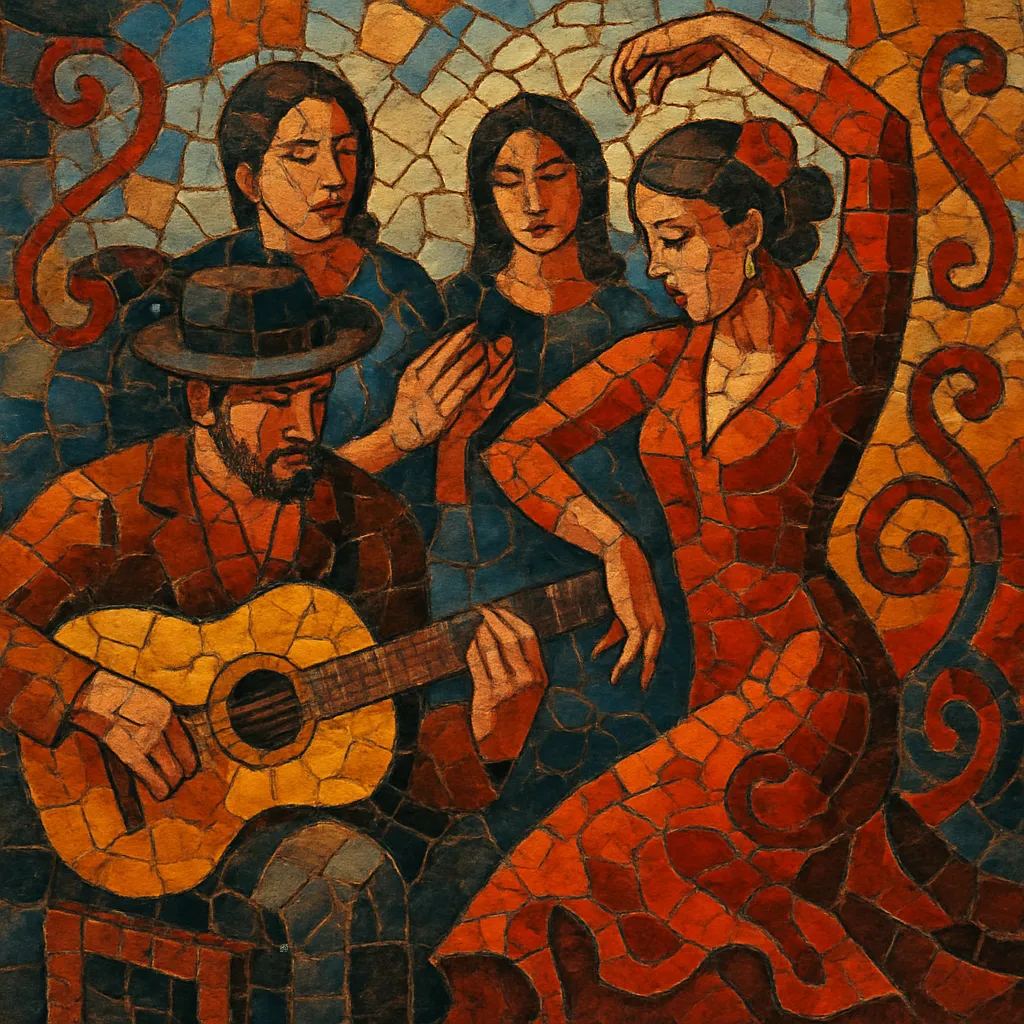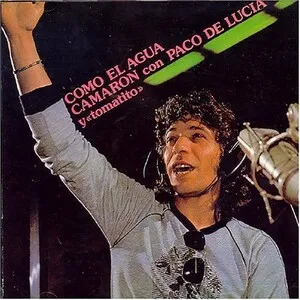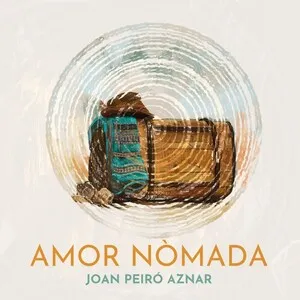Bulería is a fast, exuberant palo (style) of flamenco that crystallized in the city of Jerez de la Frontera in Andalusia. It is celebrated for its festive, improvisatory character and its elastic phrasing over a 12-beat compás.
Rhythmically, bulería uses a cyclical 12-count with characteristic accents on 12, 3, 6, 8, and 10. Performers often feel it as 12–1–2, 3–4–5, 6–7, 8–9, 10–11, allowing push-and-pull between singers, guitarists, palmas (handclaps), and dancers. Harmonically it centers on the flamenco Phrygian mode (commonly E or A Phrygian) and favors the Andalusian cadence (iv–III–II–I) in a highly modal, drone-like context.
Bulería thrives on jaleo (encouraging shouts), brisk palmas patterns, and sharp remates and cierres (punctuation and cadences). In performance it often becomes the high-energy climax of a flamenco gathering, showcasing virtuosity, wit, and rhythmic daring.
Bulería emerged in the late 19th century in Jerez de la Frontera, in the heart of Andalusia’s Gitano (Roma) flamenco culture. Its name is commonly linked to Spanish words like “burla” (jest) or “bulla” (noise/crowd), reflecting its spirited, festive nature. Musically, it coalesced from earlier flamenco practices and party styles (jaleos), sharing compás DNA with the soleá while accelerating tempo and lightening the tone, making it ideal for dance improvisation and communal finales at gatherings.
By the 1910s–1930s, bulería gained widespread currency on stages and in recordings. Great cantaores and cantaoras such as La Niña de los Peines and Manuel Torre established canonical melodic turns and lyric types, while early guitarists refined the accompaniment vocabulary and the use of Phrygian cadence movement. The Jerez school stamped the style with crisp compás, incisive palmas, and a street-wise, celebratory flair.
From the 1950s to 1970s, figures like La Paquera de Jerez and Terremoto de Jerez pushed the visceral, vocal power of bulería, while guitarists (Niño Ricardo, Sabicas, and later Paco de Lucía) expanded harmonic color, rhythmic subdivisions, and technical resources (rasgueado, picado, alzapúa). Bulería became the quintessential vehicle for virtuosity—both for cante and toque—anchoring many performances as the high-energy showpiece.
From the late 20th century onward, bulería has been central to nuevo flamenco and to collaborations with jazz, rock, and world music. Artists such as Camarón de la Isla, Enrique Morente, and subsequent Jerez guitar lineages (Moraíto Chico, Diego del Morao) preserved the earthy pulse while embracing new sonorities and studio production. Today, bulería remains a living, evolving performance practice and a touchstone for rhythmic sophistication across flamenco and beyond.





